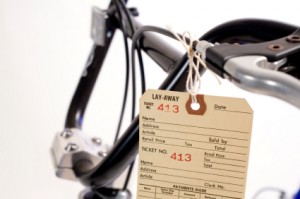Way back in the days before credit cards, if you didn’t have the money to buy something, you could put it on layaway. With diligent payments, the desired item could be yours as soon as the final payment was made in full. Discovering that consumers saving up for things and paying cash was counter-productive to a culture of impulse shopping and entitlement, most stores gradually discontinued their layaway programs over time.
Credit cards and store cards became the preferred payment method. If you didn’t have the money to buy something, just charge it! The power of plastic was a retailer’s friend.
Fast forward to 2011. Many consumers now look at the plastic in their wallets as a necessary evil rather than a convenient shopping tool. Nationwide, the average American family is carrying over $26,000 in debt, an amount equal to a year’s worth of average national earnings. We don’t want anything more to do with debt if we can help it, but that doesn’t mean we all have the ready cash to pay for big-ticket items. To bridge the gap and encourage shoppers to shop, retailers are bringing back the old relic, layaway.
 Basic Principles of Layaway
Basic Principles of Layaway
Layaway operates on a basic installment payment system, but it’s not without its fine print. Customers usually need to pay a small fee – usually $5 to $10 – to enroll in the layaway payment plan. Holding your purchase in the plan also requires a down payment, normally equal to 10 or 20 percent of the total purchase price. Most stores offer a minimum required total purchase price to qualify for layaway, though this is often extremely low. Wal-Mart, for example, has a $15 minimum.
Items that have been placed on layaway stay with the store until the final payment is made. Payments may be set up to be monthly, bi-weekly, or weekly, depending on the fine print in the plan. Consumers who change their minds do have the option to get their money back out of the plan, although cancellation fees are charged and enrollment fees are often not refunded.
Stores Reviving Layaway
Stores reviving layaway represent some of the nation’s biggest retailers. Wal-Mart, for example, had discontinued its layaway programs for everything but jewelry in 2006. It will relaunch layaway for the 2011 holiday season in mid-October, and, if things go well, the program will be expanded to all year.
Wal-Mart’s desire to return to layaway is driven by the success that other retailers have experienced. Toy ‘R’ Us and Sears recently relaunched their own layaway programs and enjoyed a nice boost in sales. Since nearly 20 percent of Wal-Mart customers don’t use bank accounts and/or operate outside traditional credit card models, it’s a chance to recapture sales opportunities in a time when stores are fighting for every dollar they can grab.
Using Layaway To Your Advantage
Layaway programs can provide definite advantages to consumers although they need to be considered carefully to ensure the costs don’t outweigh the benefits. Using layaway programs to your advantage requires some thought as to what purchases you will need at a much later date, something that can be counter-intuitive for modern impulse buyers. Discipline is a key factor.
The biggest savings with layaway come from big-ticket items you would otherwise put on a credit card. For these items, the $5 or $10 program enrollment fee doesn’t represent a significant mark-up on the final cost. The fee is also less than what you would pay in interest if the purchase was charged and later paid off.
However, you do want to be sure to read the fine print. The Better Business Bureau receives a number of complaints about layaway programs each year, and many of those complaints stems from misunderstandings over program terms. If there are fees for late payments, deadlines for pick-up, or charges for canceling a purchase, you need to be sure you understand them up front.
At the end of the day, layaway allows you to go home with a purchase with no debt overhang. When the item leaves the store, it is fully paid for, and there are no collection calls down the road. Instead, you can save for what you need, avoid debt, and still bring home aspirational or big-ticket purchases for the holidays, birthdays, or any time you’d rather not get involved with a credit card.
©2011 Off the Grid News